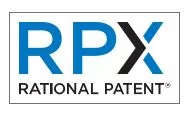At the annual RPX client conference in May, a panel of judges urged those in the audience to place more trust in juries to correctly and fairly adjudicate patent disputes. That trust often depends on anecdotal evidence for certain venues, as stereotypes abound for popular districts with respect to jury trial win rates. However, an objective analysis of RPX data reveals that some of those outcomes are not as lopsided as commonly thought.
To find out how the judges' advice plays out in litigation, we examined all jury verdicts rendered in patent cases since 2013. Nationally, six out of ten patent jury trials favor plaintiffs, with the other four favoring defendants.
Among the top districts for patent litigation, the District of Delaware and the Northern District of California closely follow this trend, while the Eastern District of Texas has historically been more balanced than the nationwide average, with about half of jury verdicts favoring defendants.

While the equal breakdown of pro-plaintiff and pro-defendant verdicts in the Eastern District of Texas may seem counterintuitive in a district often seen as being plaintiff-friendly, two factors help to explain this phenomenon.
First, the distribution of cases that have been filed in the Eastern District of Texas is substantially different than the distribution for the other top districts (and from the national distribution). Compared to the other top districts, the Eastern District of Texas has seen far more NPE litigation—95% of the cases filed there since January 2013 have been brought by NPEs.

If the NPE cases brought in the Eastern District of Texas were, on average, slightly less meritorious than operating company litigation, then the overwhelming number of NPE cases would tend to decrease the ratio of plaintiff verdicts.
Second, far fewer cases are resolved on summary judgment in the Eastern District of Texas relative to other top districts. As shown below, 70% of the motions for summary judgment filed in the Eastern District of Texas are denied. The real-world effective denial rate is likely even higher, as many judges in the district have, at times, restricted litigants' ability to file for summary judgment by requiring them to seek permission to file through letter briefing. Indeed, the chart in Figure 3 shows that the Eastern District resolved fewer motions for summary judgment (regardless of outcome) than did the District of Delaware, despite having roughly double the number of cases over the same time period.

The disparity in grant rates for summary judgment suggests that the Eastern District of Texas is sending cases to the jury that other districts may have resolved pre-trial, often in favor of defendants. The submission of those extra cases would likely increase the number of verdicts favoring defendants.
In conclusion, jury verdicts in patent cases favor defendants about 40% of the time nationwide, while in the Eastern District of Texas, the higher percentage of NPE cases and the lower percentage of summary judgment rulings create a more balanced outcome, at around 50%.
The content of this article is intended to provide a general guide to the subject matter. Specialist advice should be sought about your specific circumstances.

